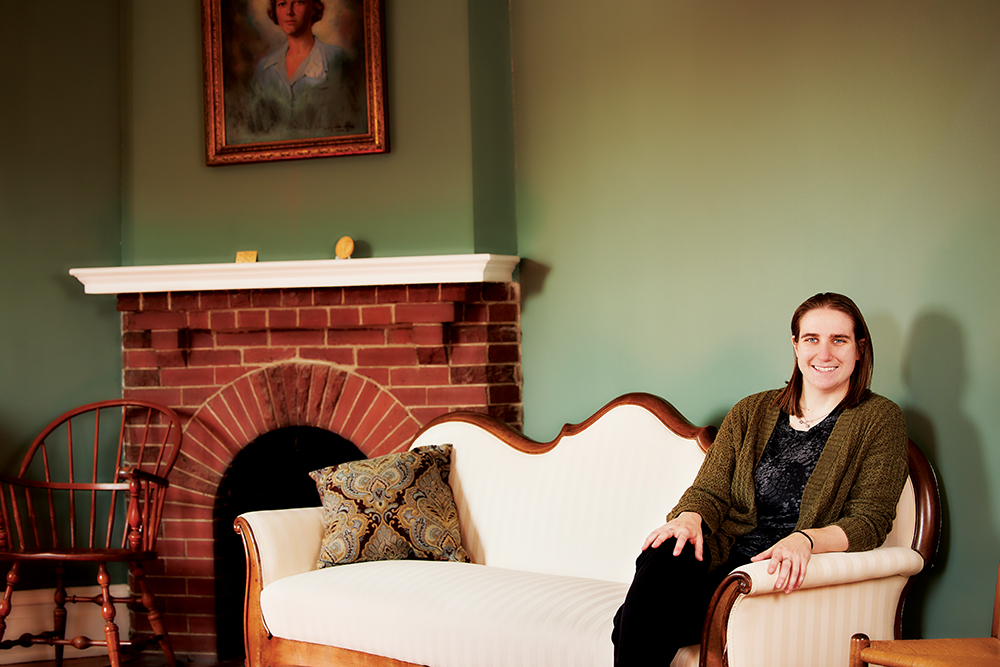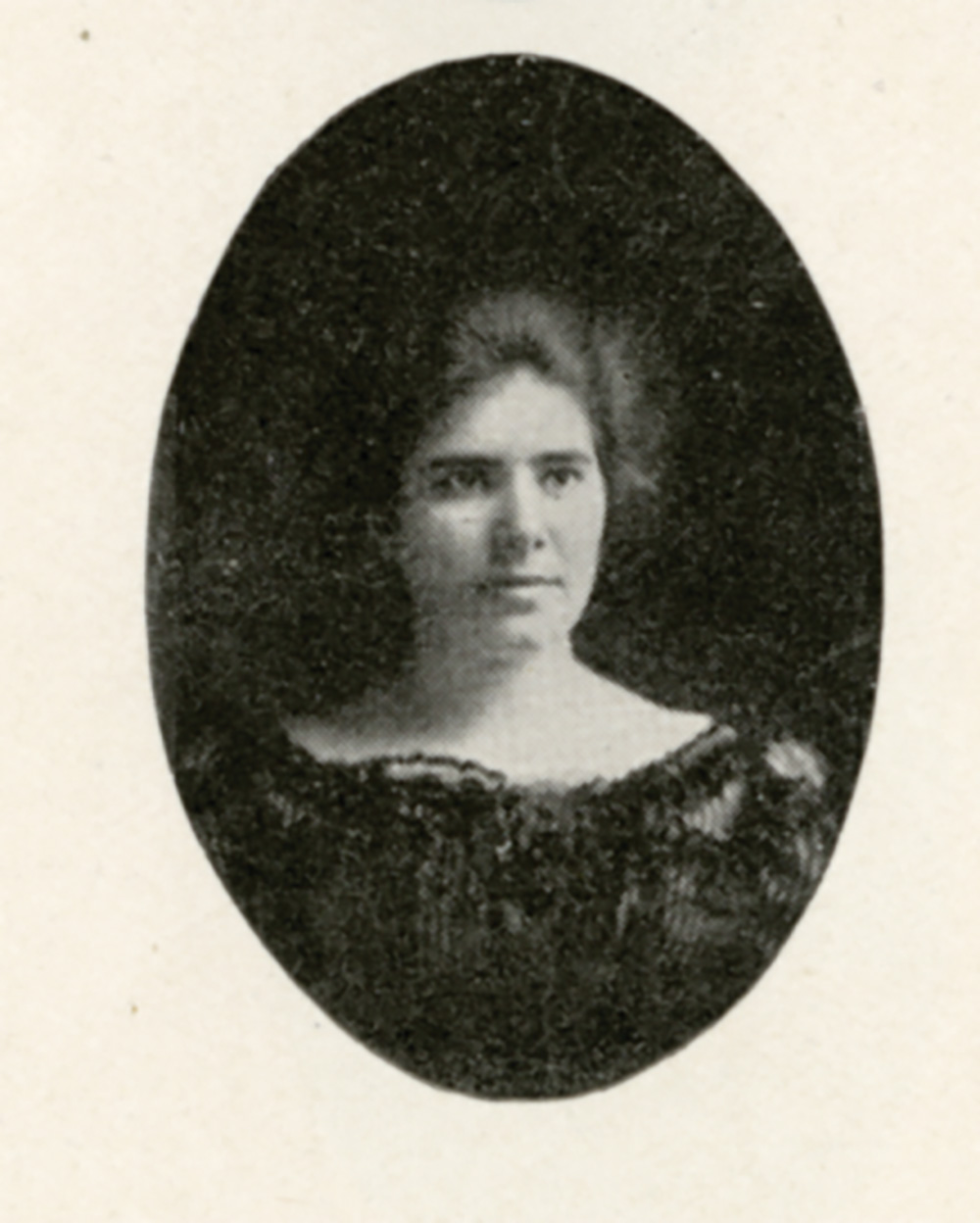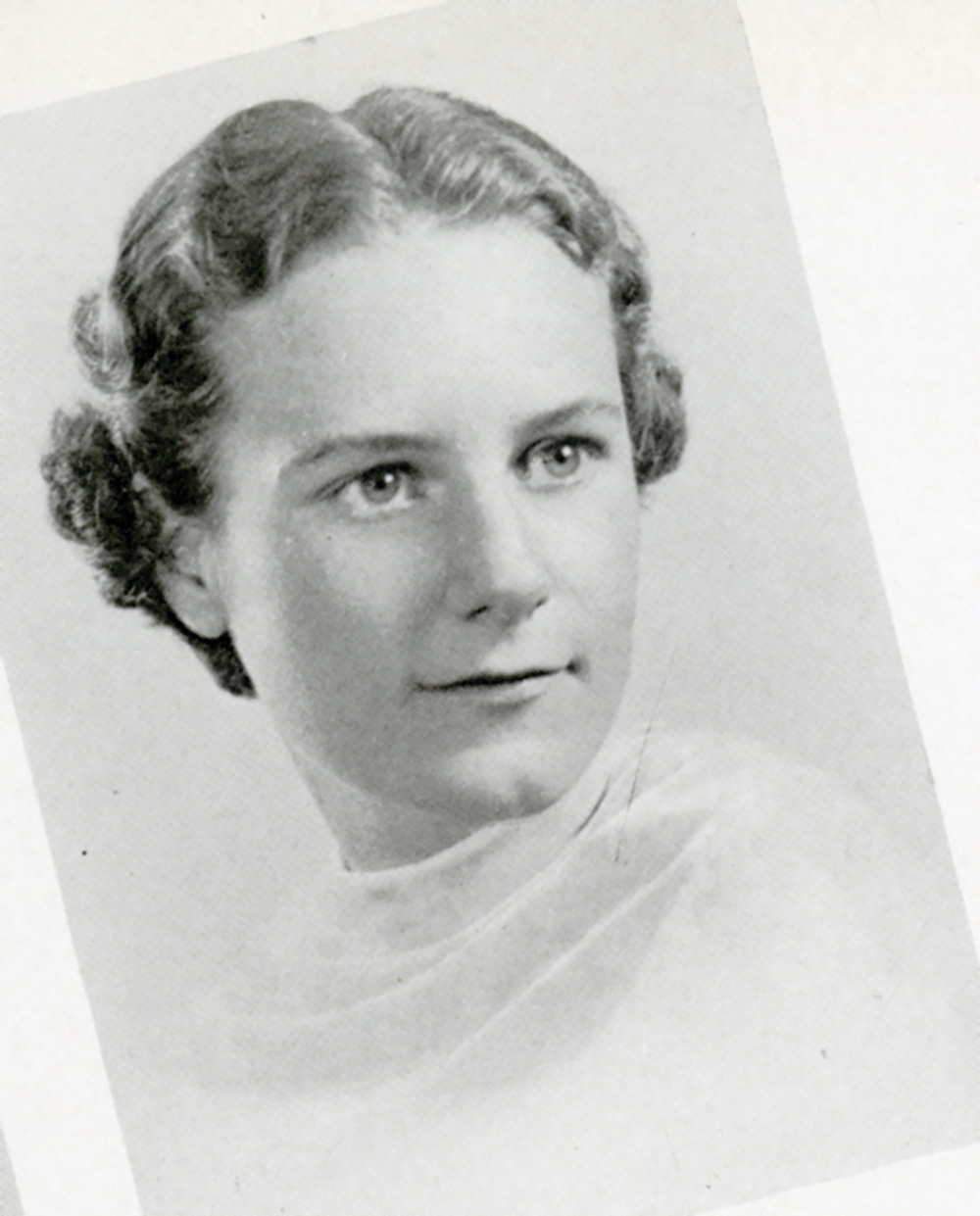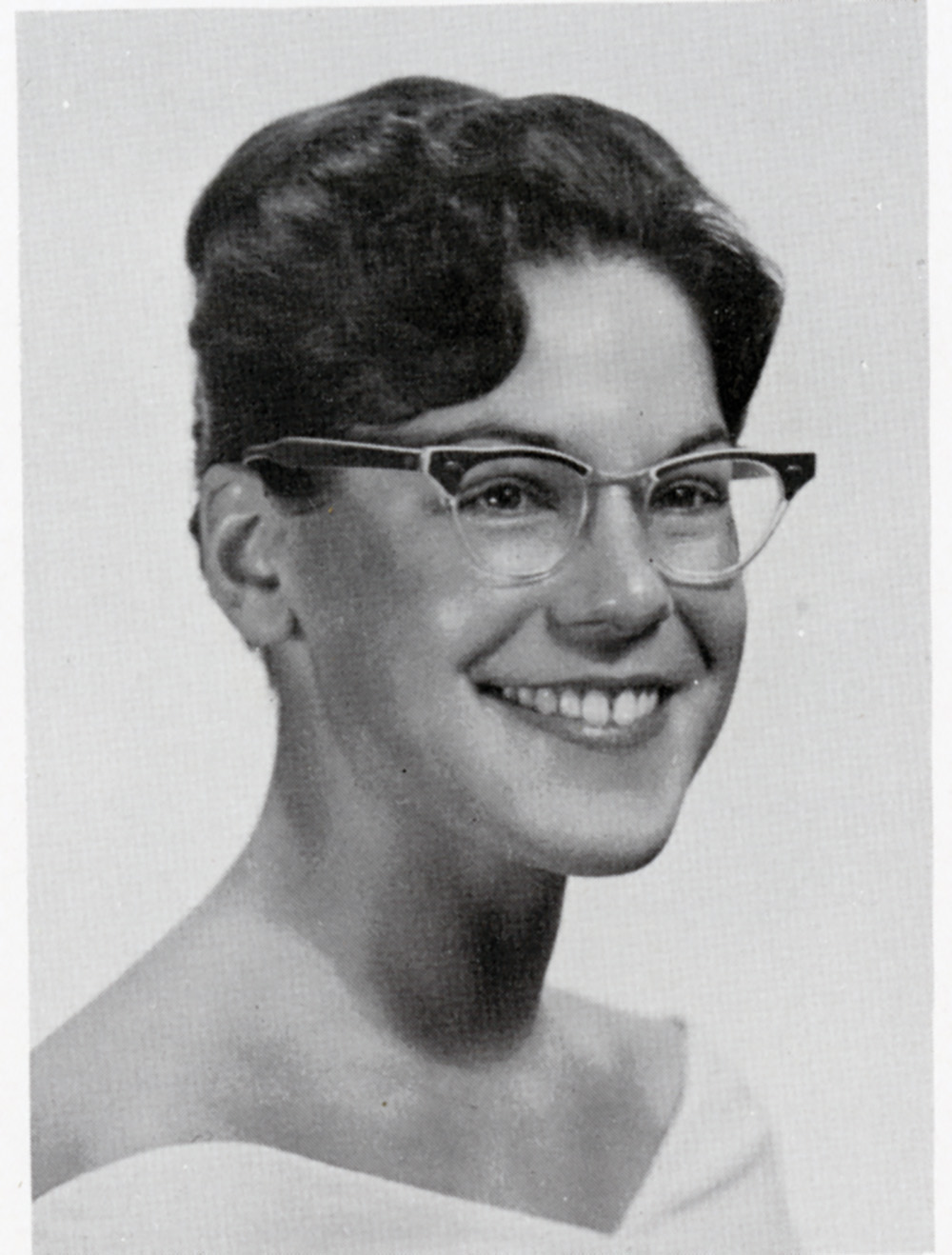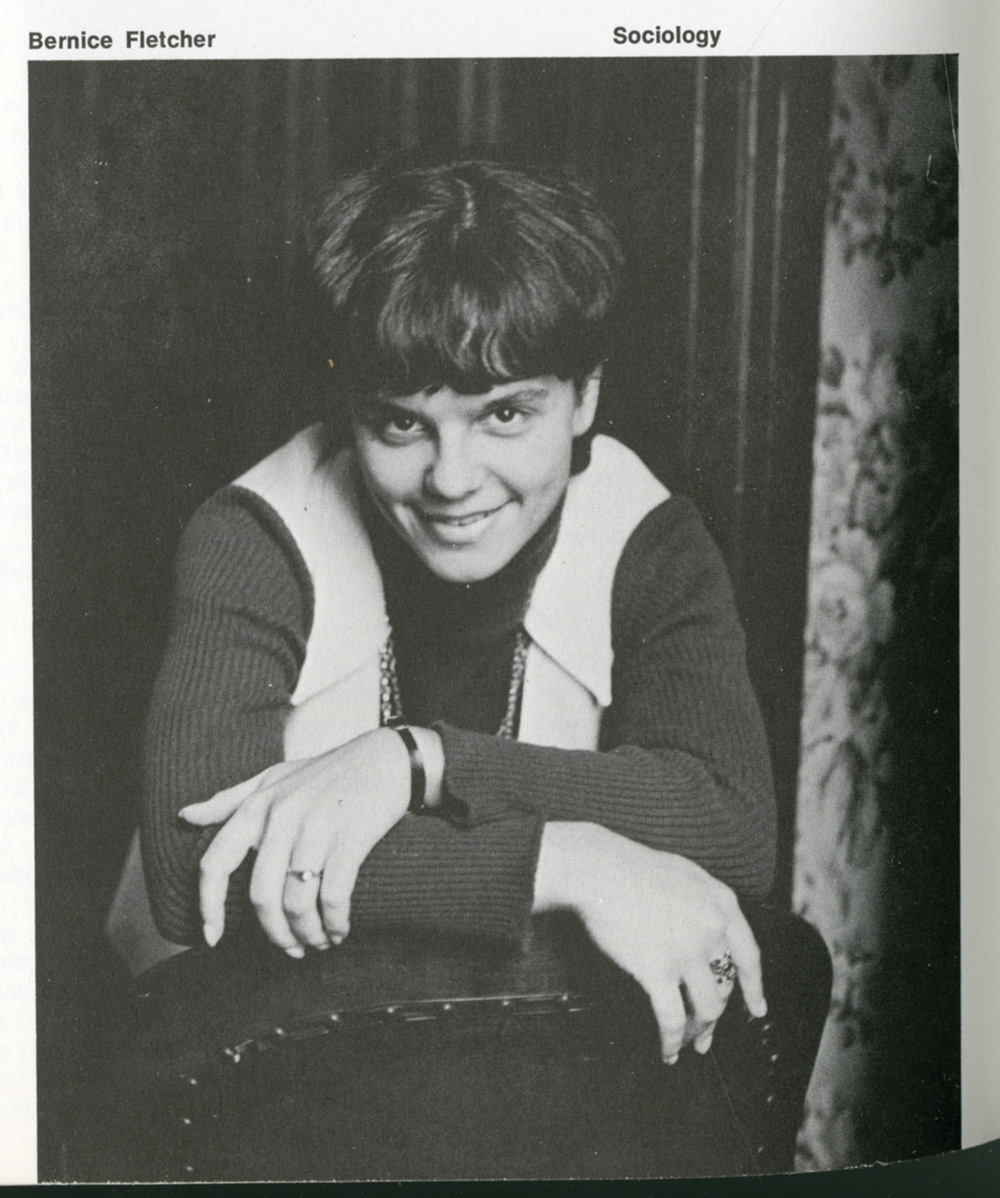With the ink on her Ph.D. just about dry, Maxine Wagenhoffer joins the faculty and staff of Wilson buzzing with ideas about how to connect the College community through women’s history and education – and somber with admiration and affection for the lineage that’s entrusted to her care.
You may spot her in Warfield Hall, in what has already become a signature look of baseball cap and crewneck sweater, leading a first-year seminar or U.S. history class. Or, if you take the short walk up the road to the Hankey Center for the History of Women’s Education, you could drop in for an impromptu chat (which would be welcome), or catch her poring over the archives and greeting alumnae volunteers. In either setting, you will most definitely find an energetic young woman with a genuine passion for U.S. history and a contagious enthusiasm for education and community.
Maxine Wagenhoffer, Ph.D. joined the Wilson community in August in her dual role as assistant professor of history and director of the Hankey Center for the History of Women’s Education. She arrived from The Ohio State University just weeks after defending her doctoral dissertation, which examined the life and influence of Alice Roosevelt Longworth, Theodore Roosevelt’s eldest daughter, notorious smoker, and icon of the early 20th century.
Although she’s new to the College, Max’s path here started as far back as third grade. Her parents were history buffs, and she grew up visiting the many historic sites near her hometown of Edison, New Jersey, and throughout the northeast. She attended Rutgers University to study history, and it was there that she discovered firsthand the legacy of women’s colleges in the United States and came to focus on women’s history. Max spent much of her time at Rutgers’ Douglass Campus, which began in 1918 as a teacher’s college for women within Rutgers. It began enrolling male students in the 1970s and was fully absorbed into Rutgers in 2006 (graduates receive their degrees from Rutgers), but it retains its status as the only women-focused residential college within a public research university.
“Because they had a very robust alumni [group] who were very proud to have gone to a women’s college, Douglass was made into a residential program. The campus is still there, still beautiful.”
It’s not hard to connect the dots between Max’s backstory and her fast friendship with the Wilson community. And while she acknowledges many points of familiarity and a sense of shared vision, she’s quick to acknowledge that she has much more to learn. We spoke on day 10 in her new role at Wilson.
Congratulations on your new job, and on your Ph.D. Is it Dr. Wagenhoffer?
[laughs] No, please, Maxine is fine. You can call me Max.
It’s a tough job market for academics out there. Jobs that are a great match must be even more scarce.
Yes, I’m so grateful for this opportunity, and it is pretty unusual to find a position that aligns so well with one’s area of interest. That’s part of why the opportunity at Wilson really spoke to me. Women’s history has always been my background. So when I saw the job, running the center and also teaching up to three U.S. history courses, it felt like a great fit.
What was your first impression of the College?
I did my campus visit in late June. I was really impressed by the people I met and the vibe on campus. The commitment to teaching and to accessibility were apparent, for one. And there were a lot of great connections that seemed like a good sign. Bonnie Rock-McCutcheon got a Ph.D. from Ohio State, and we found out that we both grew up in Edison – she grew up in south Edison, I grew up in north Edison, so we attended rival high schools. She graduated the same year my sister did. So I joked, “Oh, were you also a color guard captain?” and she said that no, she was in marching band. [laughter]. I saw a lot of interesting connections like that, which you don’t really find in the larger world of higher education.
Your scholarship and your college experience have some intersections with the history of women’s education. How does that shape the way you see being part of Wilson College now?
It’s about evolution. A core of Wilson’s history is that it began as a women’s college, and at the same time you have to reinvent yourself. … I think it’s important to understand that higher education is consistently changing. You have to be able to reinvent yourself to meet [changing] needs. I mean, look where we are with online education.
Who would have thought 20, 30 years ago that you would be taking a course from home?
And at the same time, you’re preserving the legacy.
A part of the center’s mission is to maintain the history and that legacy. I’ve been here for all of 10 days, and classes haven’t even started yet, but my understanding is that when I go in to teach a course, my job is to use the history of the college to talk about the founding, and all these great events [since the College’s founding] that illustrate how the College is a microcosm of these larger things that happen throughout U.S. history. So yeah, incorporating the College’s history, and women’s history, into the issues students are thinking about today, and the way students are learning, is all part of it.
What stands out to you so far about Wilson’s culture?
There’s an understanding that this is a community. Many of the staff went to Wilson, too, and that’s impressed me; they have tremendous pride in their institution.
People who come here want to stay.
Yeah, and I think it’s important to maintain that community vibe. This is why when I’m teaching the second half of the U.S. history survey next semester, one of the assignments I want to do is to have students interview Wilson alumnae and alumni. I particularly want to get some of the younger alums, from the ’90s and the 2000s, who may not have been covered as much. Mainly what I want to do is create connections – with students, with alumni, with the history. I have ideas for connecting with other institutions as well. I really see my role as director- slash-faculty member as symbiotic, with a lot of cross-fertilization. I think that’s super important.
What are some aspects of Wilson’s history that you think are important to spotlight?
I think what I envision for the center is to contextualize the history. We’ve had some extraordinary, prominent women attend Wilson, like Hannah J. Patterson, who was a leader in the Pennsylvania suffrage movement. We’re in a moment now when there’s a lot of change going on, and Wilson is doing what it can to be a part of that change and to thrive as an institution. And whoever my students are, I hope they would take tremendous pride in the legacy and the history, and to see this institution and have pride in where they’re attending.
What makes Wilson an exciting place to teach history?
Many women’s colleges, Wilson included, came about in the aftermath of the Civil War – a period of enormous change, culturally, socially, economically. Part of that included evolving understandings of what education should look like. Today, education looks like a lot of different things, but I think what [history education] really needs, at this point, is to be accessible. Wilson really aligns with my vision of history being accessible. In the work I do for Girl Museum…we’re thinking of a middle-school student from anywhere in the world. So accessible education is really important. I think there’s a lot of misunderstanding at large about history, and as a teacher it’s important to me to present a more complete picture of history in ways that are accessible to everyone.
What’s at the top of your wish list for the Hankey Center?
To get students in here more regularly. Eventually, I’d like to do some more collaborative endeavors with the
community. Once I settle more into my role, I want to go into local high schools and talk about Wilson and about the women who came through here. I want to connect with different historical societies – I think that’s really critical. I want to be immersed in the community and make those connections. And now is a critical time to do so, for Wilson as a college and also for the larger purpose of teaching history.
How would you like the Hankey Center- the building itself-to help bring that vision to life?
It is somewhat remote, and I’m trying to change that. I’m trying to be active, getting out onto campus – I try to go to the social things to build bridges. My vision is to get students to come here and to interview alumni, explore
the archives. Part of that is trying to generate interest in student positions we are trying to create. I want the center to be really interconnected and vibrant.
What’s something you’ve learned about Wilson’s history that you can’t wait to share?
Wilson is such a microcosm of women’s history; there’s so much to know! When I visited over the summer I talked about Alice Roosevelt Longworth because she was notoriously a smoker; people went after her for being a “smoking fiend.” It brings up perennial debates about women’s roles in society, and it reminded me of a controversy here at Wilson in the 1920s and ’30s.The story goes, women were smoking at the college, and President Warfield hated women smoking. There were petitions, and lots of interesting debate. In the archive there are letters from parents who were angry that the College had lifted the ban. There was even an argument that the students weren’t really independent yet, so the parents should decide. Today, would we say that about a young woman going to college? That’s just one example of the things I’ve found in the archive that I’d like to develop into projects. So, I have ideas. Will they be able to be implemented? We’ll see. There’s a lot to work with, and I look forward to doing so.
How do you see your role as an emerging leader in women’s history and education?
I don’t know if I see myself as a leader yet, but in the role, I’d say part of it is building bridges, and another part is
taking cues from students and alumni. I’m still getting a feel for everything, getting a sense of how everything
intersects, but I want this to be a place that serves the entire community. I want this to be a collaborative, evolving place. We have some incredible digital exhibits and archives, thanks to my predecessor, Amy Ensley, and the staff and volunteers over the years. And I just want to be sure that, I want to be sure that this is a vibrant place.
What’s an example of the collaborations you’re thinking of?
Joan McCulloh ’52 volunteers in the center on Wednesdays. It’s so warm to see her, and I thought, ‘We’ve got to get Joan to meet students!’ Things like that are really important. So much of professional life in every field is who you know. I’m hoping that through different projects, students will get a bigger sense of the College’s history and build the relationships that can shape their futures.
What are some parts of your own history that you’d like to share with the Wilson community?
A big piece of Wilson’s culture is built on the relationships of peers and mentors, and that’s something that’s important to me too. I have been lucky to have great mentors in women’s history and public history. I think public history is as important as women’s history is, and we’re at a moment when it needs to be done well. I was fortunate to have people who showed me the kind of mentor I would like to be – even though I’m still very young. I know I say that a lot, but it’s true. It keeps me aware that I’m part of a long legacy of amazing scholars and others in women’s history, and I have big shoes to fill here.
Placing Girls at the Center
Combining her research interests in pop culture and gender studies, Max has volunteered for the nonprofit Girl Museum since 2022, writing encyclopedia entries on women who have made an impact on the world – especially by using celebrity status or pushing the boundaries of female cultural norms.
“The whole point of Girl Museum is to memorialize and historicize girlhood,” Max says. The project aims to be a resource for girls and to provide a more complete telling of history that places these women where they belong in history – at the center.
In her classes at Wilson, Max brings a similar sensibility to her students, presenting opportunities to connect with women’s history from Wilson and beyond. Below, Max walks us through her personal Girlhood Hall of Fame – women who have inspired her personally and professionally. Explore more at girlmuseum.org.
Alice Roosevelt Longworth “A rambunctious presidential daughter whose celebrity power captivated millions for decades.”
Mary Pickford “A movie star who was “America’s Sweetheart” (although she was born in Canada) and became a power player in Hollywood.”
Anna May Wong “A Chinese American film star and activist who combated racism within the film industry.”
Madam C.J. Walker “A Black woman entrepreneur in the beauty industry whose philanthropy focused on social activism.”
Rachel Devlin “A stalwart mentor and historian at Rutgers who wrote the award-winning A Girl Stands at the Door: The Generation of Young Women Who Desegregated America’s Schools, about inspirational women who participated in the movement to desegregate schools.”
What is a Wilson Woman?
The Hankey Center was established, in part, to archive memorabilia related to the College and its alumnae and to serve as a repository of information about women’s education from around the College’s inception to the present. In the archive, bits and pieces – yearbooks, class rings, household items, artifacts of all kinds – offer clues about the lived experiences of the women who walked this campus over the past 154 years.
There is, of course, no one answer to the question “What is women’s education?” There are nearly as many answers as there are women; women’s views of themselves, and a culture’s view of women, change from era to era (or decade to decade, or sometimes, it seems, moment to moment). A woman’s desire (or need) to learn etiquette, midwifery, or typesetting in 1870 was just as valued as a woman’s ambition to learn astrophysics, midwifery, or veterinary medicine today. “When we study history, it’s imperative to center the historical subject’s point of view, not our own,” Max says.
Being a Wilson Woman is no different. To offer a glimpse of the immense range of what that has meant over the years, Max sifted through yearbooks, newspapers, and other media stored at the Hankey Center. The images
and writings also give a taste of what a student or visitor might encounter in a history class or presentation with Max.
Some of these yearbook entries read like odes, suggestive of the lifelong friendships so many alumnae make during their Wilson years. Others read like dadaist poetry, inviting us to eavesdrop on the inside jokes and private thoughts of a particular time, place, person. All of them show the complex humans behind their accomplishments – from those who rose to prominence as College leaders to those who became pioneers and change makers in their fields. (One wonders what Margaret Criswell Disert would have thought of the truism that good work is rewarded with more work.)
(Note: Some of the information and images below were previously collected for the 2023 exhibition Discourse: Embarking on a Collective Conversation with Black Alumnae of Wilson College 1954–1979 by former Hankey Center Director Amy Ensley.)
Hannah J. Patterson (1879-1937), American suffragist and social activist.
Hannah Jane Patterson, Class President, 1897-1898
“Hannah Jane Patterson, Class President, 97-98. X T II. Defender Basket Ball Team, 97-98, 98-99. Captain, 99-00. Western Pennsylvania Club. Business Manager of Conococheague, 1901.”
Lt. Commander Margaret Criswell Disert ’20 served at Wilson as instructor in mathematics, as registrar, advisor, and as dean of the College.
Margaret C. Disert, Mathematics, 1920
“We did not know Margaret very well our freshman year, we are sorry to say. Now, however, she is known not only to ’20 but to the whole college, and the better we know her the more thankful we are. … She is…so willing and so capable that everyone just heaps work on her. Handling the funds of the YWCA is no easy task, but she does that and the rest of her duties so well that everyone predicts big successes for her in the future.”
Pauline Morrow Austin ’38 conducted research at MIT into the problems of electromagnetic waves in the ionosphere as part of the war effort in the 1940s.
Pauline Morrow, Mathematics, 1938
“Scanner of the starry heavens … telescopes … and higher mathematics … scholarship … spirituality … and the soul that reaches upward … Mexican senorita … a hockey stick … or tennis racket … a basketball … or
a blue W … lover of music … with a marvelous inability … to carry a tune … unselfish generosity … friendliness to all … Polly.”
Patricia Vail ’63 participated in the Freedom Summer of 1964 and took up many causes as a lawyer.
Patricia Vail, French, 1963
“Strictest judge of her own worth; first to face the truth. A warm smile for everyone, a persevering mind with a French twist, and a vitality dispensing unabated humor – with Pat there is never a dull moment. Pat is an avid bridge player with an earnest heart and merry disposition.”
Margaret L. Woods ’69 devoted her life to the betterment of the underserved and marginalized. She served on the New Jersey Governor’s Committee on Children’s Services, the Newark LGBTQ Concerns Advisory Commission, and many other advocacy groups.
Margaret Louise Woods, Sociology, 1969
“You happen to like Marge very much. Most of the people who know her do. She’s one of the rare people who are aiming for something immediate, tangible and vital, and she intends to devote all of her time to it – working with her people in the struggle for Black identity. Maybe it’s her strong sense of purpose that gives her that inner strength and compassion and humor. Wherever she gets it, you’re glad of it.”
Bernice Fletcher Jackson ’71 was a civil rights leader whose family had a personal connection to Bishop Desmond Tutu. She was the first woman to lead the Commission for Racial Justice. “The defeat of apartheid is evidence that god is active in the world today,” she said.
Bernice Fletcher, Sociology, 1971
“Bernice, the one with the married roommate … the urban teacher of tomorrow … never leaves anything unsaid … the witty little instigator … starting the weekend on Thursday … lost in winter … Afro Am’s publicity girl … in need of more wall space … a laugh that sets everyone off.”
VISIT THE HANKEY CENTER
The Hankey Center and Archive for the History of Women’s Education features rotating exhibits as well as a reading room in the C. Elizabeth Boyd ’33 Archives. The Center is open to students, researchers, alumnae, alumni, and the public by appointment. Please contact the Center at hankeycenter@wilson.edu or 717-262-2562 to set up a research appointment.
Closed all campus holidays.
Please also visit the Hankey Center’s Digital Collections at https://www.wilson.edu/hankey- center-and-archives

